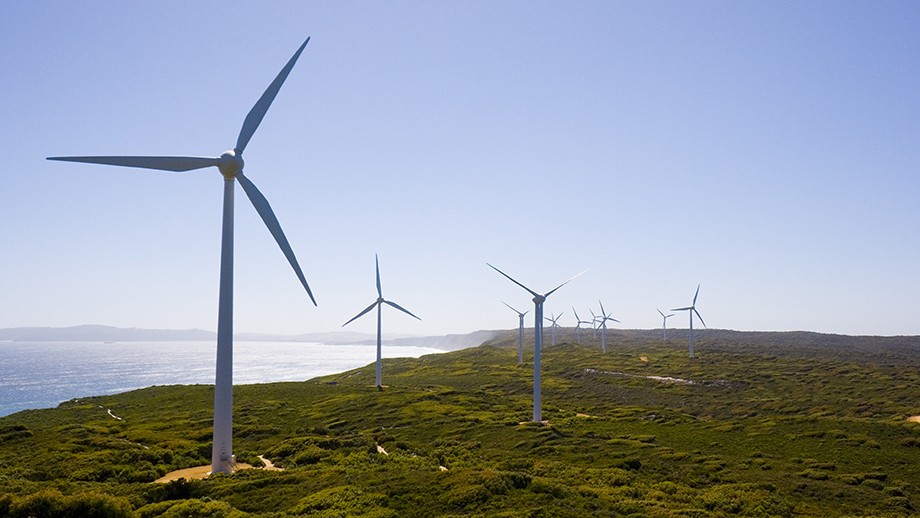Renewable energy deal gives no certainty over coming decades
Ken Baldwin, Australian National University
Over the past 14 months the uncertainty over the future of the Renewable Energy Target (RET) has completely stalled Australia’s electricity industry (both renewables and fossil fuels), causing many companies to reconsider their future in this country.
A compromise target of 33,000 gigawatt hours (GWh) in 2020 agreed between Labor and the Coalition has finally ended the deadlock. Or has it?
The electricity industry needs certainty to invest in long-term generating capacity, but the target itself is only in force until 2020 (just four years and seven months away). At least the major parties have agreed to get rid of the intermediate biennial reviews which would have thrown certainty out the window.
But Labor has promised to increase the target after the next election, and who knows what a re-energised post-election Coalition government might do if they were to retain power.
So where does that leave the sector over the coming decades?
Falling demand increases renewable share
The ostensible reason for the current review was that for a notional goal of 20% renewables by 2020, the original target of 41,000 GWh would have been “too high” (23% to 26%) - given that grid-based electricity demand has fallen over the last seven years (see the chart below).
This fall is the result of a combination of reasons: the changing structure of our economy away from manufacturing, fallout from the global financial crisis, increases in electricity prices arising from over-investment in networks to meet projected peak demand, improvements in energy efficiency, and the explosion of rooftop solar to replace grid-based electricity.
The decline is marked: 9% in the four years and seven months since September 2010 or around 2% a year. If this decline continues to 2020 – a similar time interval away – then it could significantly increase the percentage contribution of renewables.
Minister for the Environment Greg Hunt currently estimates that the 33,000 GWh target will provide 23.5% renewables by 2020. This is similar to projections by ACIL Allen in their report commissioned for the RET Review Committee which assumes that electricity generation will rise (not fall) each year by 1.6% on average.
Alternatively, if demand flatlines until 2020, then the contribution of renewables (currently around 16%) could exceed 25% based on the other ACIL Allen parameters.
Even more significantly, if demand continues to fall at the same rate as in recent years, then the number could surpass 28%.
By comparison, a 41,000 GWh RET would have yielded around 26% renewables under the growth scenario, around 29% with flatlined demand, or around 32% with declining demand.
Pushing out large solar
In any event, without a price on carbon, the lower renewable uptake created by the 33,000 GWh target will slow the much-needed decarbonisation of Australia’s economy. The electricity sector’s emissions have dramatically increased since the removal of the carbon tax (see the chart above), at a time when the international imperative to reduce emissions is increasing.
Further, because of the backlog of wind projects already stalled by the RET uncertainty, large-scale solar may be squeezed out even though it will be increasingly competitive towards 2020. While wind is currently the cheapest new-build renewable, the Australian Energy Technology Assessment shows it will be followed hard on its heels by solar in 2020 because of rapid cost reductions. But the potential to overtake wind on price may come too late if the 33,000 GWh is already built out by new and pipelined wind projects.
In addition, the predicted potential for the RET to eventually reduce electricity prices (due toincreased competition with incumbent generators) will be less effective now that the RET is reduced and future low-price competitors are potentially squeezed out.
No room for wood-burning
One thing is for sure, there should be no room in the RET for the burning of so-called “native timber waste” left over from other logging operations. Even if leftover timber that would otherwise decay is used, this is not a zero-carbon source of electricity for two key reasons.
First, the timber decay process itself takes many decades and retains some of the carbon in the soil, whereas burning the waste timber releases it immediately into the atmosphere.
Second, there is an additional and ongoing carbon footprint from the collection, transport and further processing of the waste timber before burning.
This is the best-case scenario. The worst case is that burning timber waste is a stalking horse for logging trees that would otherwise have locked up carbon naturally or in timber products.
With the current RET deadlock over, our next focus should be on Australia’s emissions reduction trajectory post-2020. If Australia is to meet its international obligation to keep global warming below dangerous levels, we need to provide the electricity sector with the certainty needed to make this happen.
Ken Baldwin is Director, Energy Change Institute at Australian National University.
This article was originally published on The Conversation. Read the original article.

